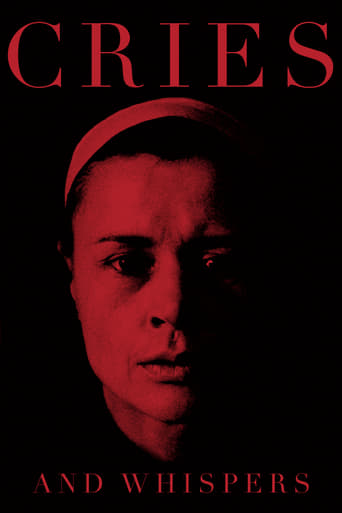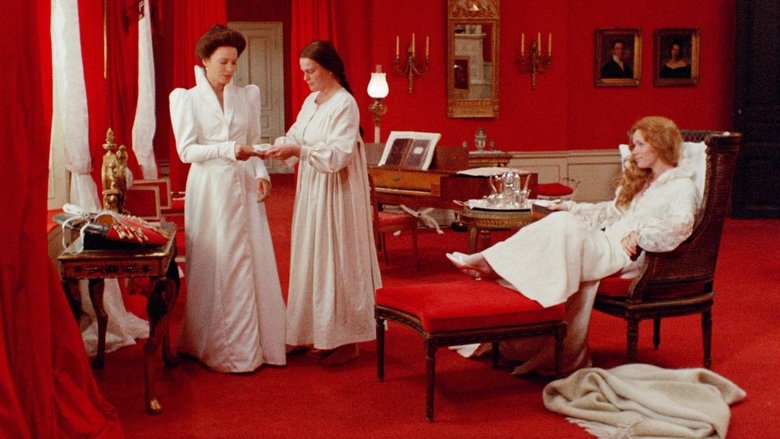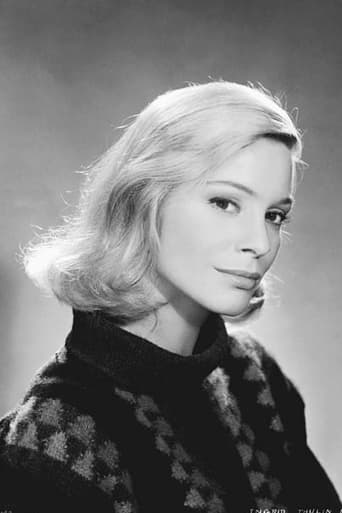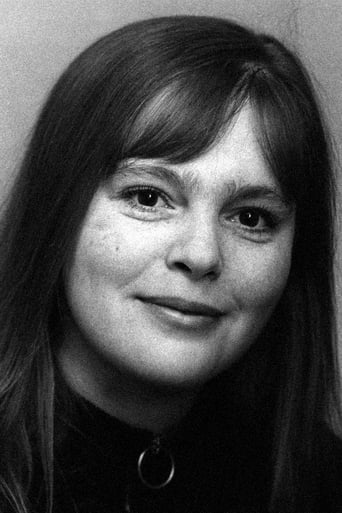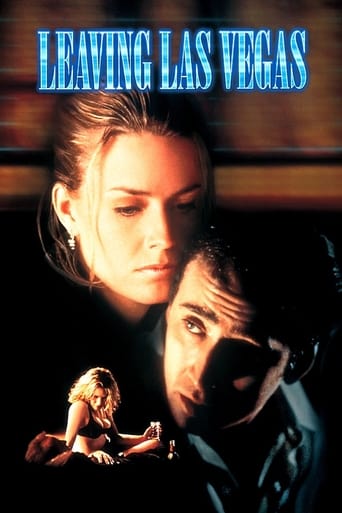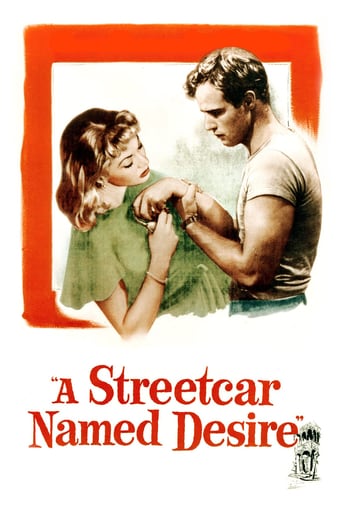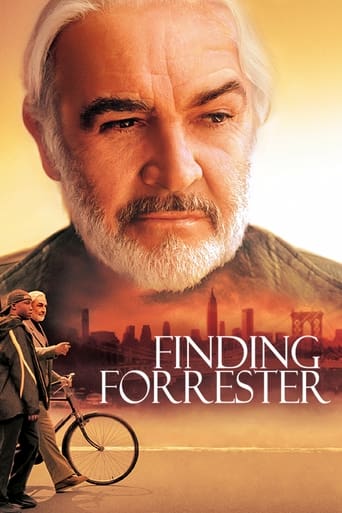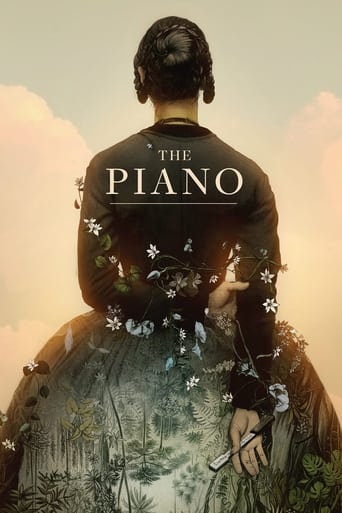Cries and Whispers (1972)
As Agnes slowly dies of cancer, her sisters are so deeply immersed in their own psychic pains that they can't offer her the support she needs. Maria is wracked with guilt at her husband's attempted suicide, caused by his discovery of her extramarital affair. The self-loathing, suicidal Karin seems to regard her sister with revulsion. Only Anna, the deeply religious maid who lost her young child, seems able to offer Agnes solace and empathy.
Watch Trailer
Cast


Similar titles
Reviews
Overrated
It's entirely possible that sending the audience out feeling lousy was intentional
This story has more twists and turns than a second-rate soap opera.
The acting in this movie is really good.
The first color film in Bergman's unique work is just to look at the color control in the scenes and decor. This is an unparalleled micro-graphic. Desperate and thoughtful masterpiece, which goes on to follow the filmmaker's view of human relationships, death and anxiety. It's a tragic moment to the film's beginning. It's a movie that's made up of dramatic effects, along with images of the hard and disturbing moments of the movie. It's a movie full of metaphors that comes in shape and color, meaning colors. And a symbol of something. The colorful metaphor in the cinema often and finally means for all cultures. In the film, all women wear white at the start. Backgammon consists of walls and floor carpets and part of the curtains, red and white, and are very tasteful. . Agnes, when he dies, wears white clothes, and places this black part on a red background. Bergman intelligently and with four characters provides a condition for metaphorical tale (Mariya refers to red as it is full of The passion and the youngest) When the family doctor arrives home for Agence's visit, Maria looks at Maria's tone of notice that there is a relationship between the two. The condition that the doctor drops from, but Maria does not. Maria allegory gets a passion for life. Carneville, an allegory of depression and frustrated excitement, seems to be a film about the fluency of Swedish women who refer to Bergman's feminist views and who have a great understanding of these issues, had the same look for Angelo Antonioni than Italian women With this view, each character is symbolized by women's morals (Anna is a symbol of innocence and anagnas, an allegory of oppressed love and an unplanned and early death)
Bergman's "Cries and Whispers" confronts the fears and anxieties of life in such an excruciatingly unfiltered way. It is an utterly depressing film, but a fantastic one. Agnes is dying of cancer. The film begins with a shot of a lone statue in a large field, shrouded I'm fog, then it cuts to a clock, slowly ticking away the seconds, and minutes, and hours. Then it cuts to Agnes. She is sleeping. Her lips are dry, and her breathing is short. She wakes up, tries to go back to sleep, but can't. She begins to cry. She gets out of bed, looks outside, and seems afraid. She writes in her diary that she is in pain. All of this shows the main themes of the movie in the first few minutes. The lone statue, shrouded in fog, represents the loneliness of all of these characters, and truly, most of us. The ticking clock is often a background noise to many otherwise silent scenes, and it represents how time is slowly passing, and we are all slowly fading into our deaths. Agnes attempts to go back to sleep, showing her fear of the pain she is experiencing, but since she can't, it also shows her helplessness toward it, and how her only haven towards it, is unconsciousness. Yet she still fears death.I could go on and on analyzing the rest of the genius of this film: how Karin is afraid of relationships, because she doesn't believe anyone can truly connect to her mostly because of her distant husband, but also she doesn't want to open up to anybody because she secretly hates herself; how Maria acts happy on the outside, but underneath she is just trying to search for a meaningful relationship just as everyone else, and David shows this when he describes her as just trying to find excitement in her existence which consists of boredom and apathy; how their mother was just the same as them; the genius of the color palette, such as how Anna wears white throughout the film, symbolizing her connection to Agnes, while after Agnes dies, both Karin and Maria begin to wear black, symbolizing their disconnect from her, as well as their connect to each other, and Maria wearing red to show how she always has the capacity for love, but only on the surface. Since when the opportunities arise, she always chooses the easy way out, rather than stinking with the people she should love. I just went on for way longer than I expected to there, but there are so many more subtleties in this film that explore how we interact with others, how we'd like to interact with others, why we don't, and the many other fears of ours.
If you're sick of the current trend of having movies use a mostly teal color palette with orange for the explosions, then this is the movie for you. Ingmar Bergman and his cinematographer, Sven Nykvist, use a palette of red, red, red, red, and red as a backdrop for their story of three sisters in circa-1900 Sweden. Agnes (Harriet Andersson) is dying of cancer, and her two sisters Karin (Ingrid Thulin) and Maria (Liv Ullmann) come to comfort her in her final days. Not that they're much comfort, since the whole family is dysfunctional for reasons that are never clearly delineated. And they all have bizarre sexual hangups.I'm sure I'll be in the minority, but I found that when it comes to dysfunctional families, this movie pales in comparison to Bergman's later Autumn Sonata. There, the characters are real people and it's easy to identify with them. Here, they seem like little more than ciphers standing in for basic human emotions. It doesn't help that the film is grindingly tedious when it isn't being gratuitously creepy (in the creepy old uncle way, not in the horror movie way). What was the point of the "dream" sequence toward the end, anyways? 5/10 for the story, 9/10 for the cinematography, which won Nykvist an Oscar - it's not just the overwhelming use of red that makes the cinematography interesting. Since I think story is worth more than cinematography, at least to me, I give it a six, mainly because it is Bergman and I want to cut him some slack.
One of Bergman's best films along with The Seventh Seal, Wild Strawberries, Fanny and Alexander and Persona. Whether it is the most accessible of Bergman's films I am not sure(of his masterpieces I'd say Wild Strawberries and of his films overall probably The Magic Flute), but it perhaps his most emotionally complex film. Bergman's films on the most part have superb direction and thought-provoking screenplays and Cries and Whispers is no exception on both counts, in fact it is one of the finer cases of being so. It is incredibly well made, with luscious cinematography by Sven Nykvist, an unforgettable manor house setting and a red colour scheme that proves just mesmerising. The music is also hauntingly beautiful. Harriet Andersson wrenches the gut as Agnes, while Liv Ullman and Ingrid Thulin are equally as effective. As is Kari Sylwan, whose grief as the peasant maid provides some of the most moving moments of Cries and Whispers. What really distinguishes Cries and Whispers aside from the production values, Bergman's direction and Andersson's performance is the story, which focuses on the failure of love and agony of loss. The family drama is intense, the agony of loss aspect is just harrowing and the use of memories and fantasies help to make the failure of love parts deeply moving. Overall, a masterpiece that is emotionally complex, superbly directed, beautifully acted and made and is moving, intelligent and harrowing in equal bouts. May not be for all tastes, but my advice generally is don't miss it. 10/10 Bethany Cox

